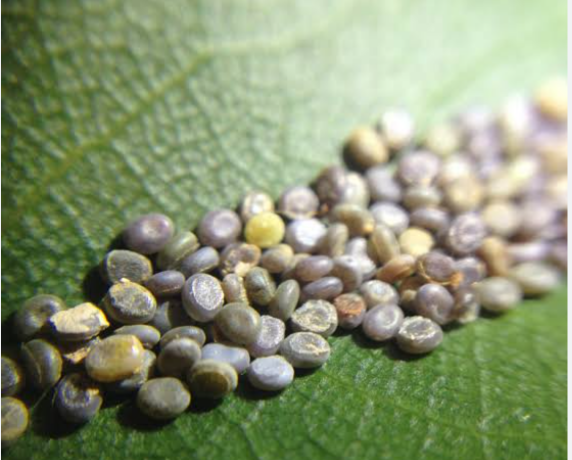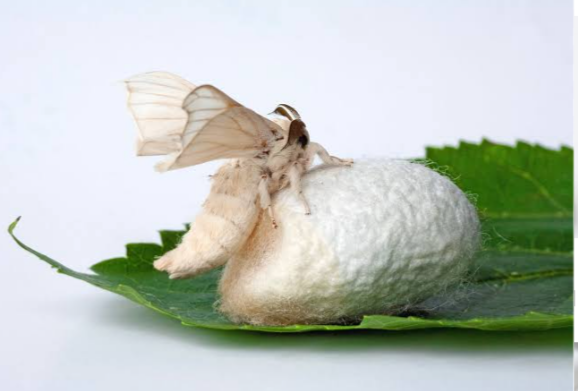
Silk is a fibre used for making fabric materials. It is the strongest fabric made through natural processes. It is composed of two different proteins – sericin and fibroin. Fibroin is a protein that certain types of insect larvae secrete to make cocoons. Approximately 80% of silk fibre is made up of fibroin, which is concentrated at the core of the cocoon. This core is surrounded by a layer of sericin (which makes up the remaining 20% of silk). Sericin is a gummy substance that protect the core or fibroin. Not all insects produce fibroin. One of the producers are the Bombyx mori larvae , which are worms that only live on mulberry ( Morus spp) trees.
The presence of pigments (such as xanthophyll) in the sericin layer of the fibre imparts colour to the silk. Each type of silk has a distinct colour.
TYPE OF SILK AND THEIR COLOURS .
Mulberry Silk-Yellow/Green
Eri SilkCreamy-White/Brick-Red
Tasar SilkCopper-Brown
Muga Silk-Golden
SILK WORM FARMING (SERICULTURE )
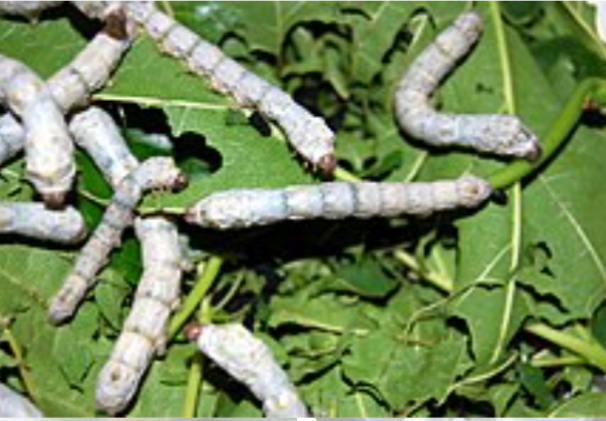
Sericulture is the process of cultivating silkworms and extracting silk from them. It involves careful management of the silkworms from eggs to cocoon, silkworm extraction and subsequent processing of cocoons to silk. The caterpillars of the domestic silkmoth called ‘Bombyx mori are the most commonly used silkworm species in sericulture. Other types of silkworms such as Eri, Muga, and Tasar are also cultivated for the production of ‘wild silks’. The moths lay eggs which can be bought from a reliable source or produced on the farm by the farmer. The eggs are laid by the adult moths, collected and placed on paper or cardboard sheets which later hatch into silkworms. The hatching area must be well ventilated with suitable temperature of about 25 to 28 oC and humidity of 75 to 80%. Eggs take about 14 days to hatch into larvae. The larvae are covered with tiny black hairs. They begin to molt when the colour of their heads turns darker. After molting, the larval phase of the silkworms emerge white, naked, and with little horns on their backs. The larvae stage takes about 25 to 30 days after which they turn into moths.
PROCESS INVOLVED IN SERICULTURE
Sericulture process using mulberry undergoes three primary steps.
1. Moriculture – the cultivation of mulberry leaves.
2. Silkworm rearing – promoting the growth of the silkworm.
3. Silk reeling – the extraction of silk filaments from the silkworm cocoons.
Finally, the silk filaments are woven together to form a thread. These threads are often wound together to form a yarn.
MORICULTURE
Moriculture refers to the cultivation of mulberry plants, whose leaves are used as silkworm feed. Mulberry belong to the genus Morus with about 10 species of the plant found around the world. They produce leaves edible by Bombyx mori and their sweet fruits edible by man. The White mulberry ‘s (M. alba) leaves are the most commonly used as silkworms food. The plants can be grown via three different methods:
-Cultivation from seeds
-Root-grafting and
-Stem grafting
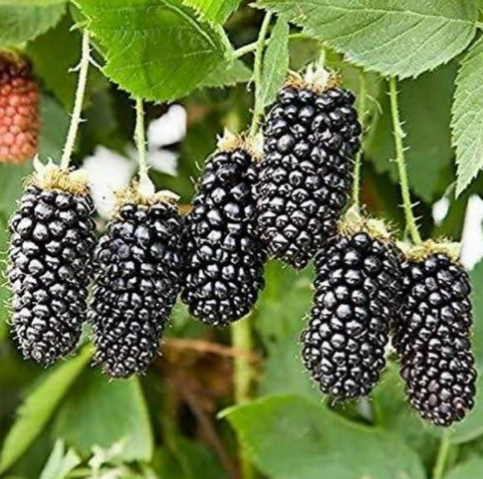
The stem grafting method is the most commonly used method for mulberry plantation. The grafted plant may be directly planted on the field or first raised in nurseries before transplanting.
SILKWORM REARING
TYPES OF SILKWORMS
Mulberry silkworms can be grouped into three different types. The major groups of silkworms are the univoltine categories . Uni means one and voltine means brood frequency. and also there is the bivoltine categories. Bi means two. And lastly the multivoltine categories.
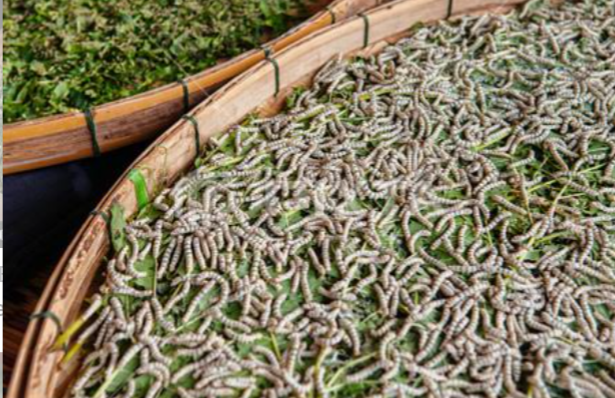
1. THE UNI OR MONOVOLTINE RACE : The univoltine breeds of the Bombyx mori are found in Europe. They produce only one generation in a year. The weight of the larvae is high and the cocoons are heavy. The larvae are usually weak. They produce eggs and hibernate during winter due to the cold climate, and cross-fertilize only during spring. This make them generate silk only once annually.
11. BIVOLTINE RACE: The second type is called bivoltine and is normally found in China, Japan, and Korea. The breeding process of this type takes place twice annually. It is usually carried out through the slightly warmer climates and the resulting two life cycles. The length of the larva stage is short. The duration of the leaf consumption stage to cocoon production is short. The quality of the cocoon produced are inferior to that from univoltine races. The cocoon weight, shell weights, silk percentage and filament length are less compared to univoltine.
111. MULTI OR POLYVOLTINE: The polyvoltine type of mulberry silkworm can only be found in the tropics. They produce between 5 to 6 generations in a year. The length of the larva duration is short. The eggs are laid by female moths and hatch within nine to 12 days. This makes them to have up to eight separate life cycles throughout the year. In sericulture, the female silk moth lay eggs on paper or cardboard sheets. They can lay between 300 to 500 eggs at a goal. The eggs are then disinfected with 2% formalin solution
A feeding bed is prepared on a rearing tray by sprinkling chopped mulberry leaves onto it. The hatched larvae are transferred into this tray via a process known as brushing. In order to maintain humidity, foam strips are soaked in water and placed on the tray. The larvae will molt four times and their bodies become slightly yellow, and the skin becomes tighter. The larvae then prepare to enter the pupal phase of their life cycle. They will produce cocoons and wrap it round them. The cocoons produced are compacted, grained and soft. The cocoon filaments are fine and clean with little lousiness and more lustrous.
Note: As the silkworm larvae becomes introduced to the mulberry leaves, they feed on it vigorously. With time, as they grow, their vigorous feeding habit lessened until they reach their active stage. At this stage, the silkworm eats enthusiastically until its final feeding stage. After reaching maturity, the larvae begin searching for hospitable places to begin their pupation. The larvae are then placed on mountages to spin their thread into cocoon and pupae. The body of the silkworm wound have shrinked and becomes translucent. These mature larvae now wrap themselves in a cocoon by secreting saliva from the two salivary glands on their heads. This saliva solidifies and becomes silk when it comes in contact with air.
SILK REELING
silkworms feed on beds of mulberry leaves until they become fully grown and eventually spin themselves into cocoons . Inside the cocoons, the larvae undergo metamorphosis and molt ones to turn into pupae. The pupae inside the cocoon are then killed by placing the cocoon into boiling water and exposing it to steam and dry heat. This process is called STIFLING . This process is carried out so as to soften and dissolve the gum holding the cocoon together inorder to make it easy for extraction of the silk threads and subsequently died, spun, weaved, and finished. The silk filament are then wound into yarn

The process through which the silk filaments are removed from the dead cocoon is called REELING . The separated individual filaments are then twisted into a thread with the help of a series of guides and pulleys. This silk is then re-boiled in order to improve its lustre. Traditionally reeling is carried out by country charkha. Silk fiber or filament from around five cocoons are connected to the one end of the charkha to form a single thread of silk
One thread of silk contains approximately 50 silk filaments. However, over 900 meters of filament can be obtained from a single cocoon. Thus, raw silk is obtained from the silkworm and the sericulture process is completed.
After the Silk reeling, further processing is carried out. Such processing are carried out on the silk fibre to remove impurities and enhance its quality. Such processing include
1. DYING
The fibre is first bleached and dried. It is then immersed into a dye bath to soak up all the colour. The fabric sits in the dye bath for approximately one hour, depending on how vibrant the colour is expected to be.
2. SPINNING
In the past – till now, classic and traditional silk spinning wheel are used for silk production. Sophisticated machines are now used for spinning the fibers in industrial production of silk.
Spinning unwinds the fibers after they have been dyed, and lays the fibers flat on a bobbin to prepare it for the next step called weaving.
3. WEAVING
There are different ways to weave silk. The most popular types of weave include: satin, open, and plain. The weaving step involves interlocking 2 silk threads around each other in a uniform matter so that they eventually become a strong, useful piece of fabric.
4. PRINTING
When the fabric require a special pattern or design instead of a one solid colour that comes during the dying process of production, then printing is carried out. In the past, Screen printing which is the traditional way to dye silk was used. It is more laborious compared to the newer digital printing method. In Digital printing method, print designs are done on a special textile printer to make the patterns on the silk fabric.
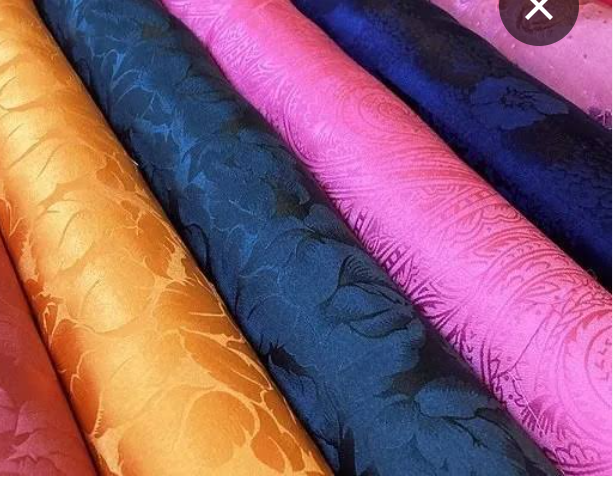
5. FINISHING
This is the last step in the process on how to make silk. Finishing involves a number of treatments, which result in the glossy, bright and sparkling silk fabric sold in the market.
CHALLENGES FACED IN SERICULTURE
Silk farmers practicing sericulture are met with several challenges that could potentially destroy their HARVEST. Such challenges include :
1. PEST AND DISEASES: Silkworms are vulnerable to several diseases such as pebrine and flacherie. Also, several pests threaten the healthy growth of silkworm larvae.
a) PEBRINE DISEASE : The pebrine disease can infect the eggs, resulting in their death before the hatching of the larvae. Pébrine disease is caused by a parasitic microsporidian, Nosema bombycis. Diseased larvae show slow growth, undersized, pale and flaccid bodies, and poor appetite
Any larvae affected by this disease develop dark spots and become lethargic.
N. bombycis kills 100% of silkworms hatched from infected eggs. This disease can be carried over from worms to moths, then to eggs and worms again
b) FLACHERIE : Flacherie infected silkworms look weak and are colored dark brown before they die. The disease destroys the larva’s gut and is caused by VIRUSES.
c) OTHER VIRAL INFECTIONS : Viral infections in the larvae may result in the shrinkage of their bodies. They may also start giving off an unpleasant odour.
Other viral infections such as cytoplasmic polyhedrosis can cause the larvae to lose their appetites.
d) THE MUSCARDINE INFECTION : Caused by fungi, can cause the larvae to become extremely feeble and eventually die.
E) The larvae of dermestid the beetlesnotepad
can bore into the silkworm cocoons and eat the pupae. Silk cannot be reeled from these damaged cocoons.
f) Some mites produce a toxic substance that kills silkworms.
G) Beauveria bassiana is a fungus that destroys the entire silkworm body. This fungus usually appears when silkworms are raised under cold conditions with high humidity. This disease is not passed on to the eggs from moths, as the infected silkworms cannot survive to the moth stage. This fungus, however, can spread to other insects.
h) Grasserie, also known as nuclear polyhedrosis, milky disease, or hanging disease, is caused by infection with the Bombyx mori nucleopolyhedrovirus (aka Bombyx mori nuclear polyhedrosis virus, genus Alphabaculovirus). If grasserie is observed in the chawkie stage, then the chawkie larvae must have been infected while hatching or during chawkie rearing. Infected eggs can be disinfected by cleaning their surfaces prior to hatching. Infections can occur as a result of improper hygiene in the chawkie rearing house. This disease develops faster in early instar rearing.
2. LACK OF TECHNICAL SKILLS : insufficient technical skills may result in low-quality silk. At the brushing stage, extra care must be taken conserving the silk worms so that they are not damage. Also, timing to know when the cocoon are to be harvested is required and processing techniques.
3. insufficient silkworm production can result to underproduction of silk materials.
4. The pupae in the cocoon do release an enzyme called proteolytic enzymes to make a hole in the cocoon so it can emerge as an adult moth. These enzymes are destructive to the silk and can cause the silk fibers to break down from over a mile in length, which reduces the value of the silk threads. Although these damaged silk cocoons are still used as “stuffing” and production of duvets, jackets, and other purposes. This can be prevented by boiling the cocoon in hot water before the moth let loss.
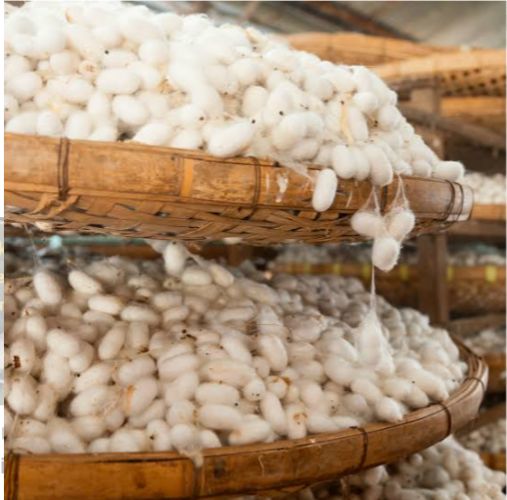
TERMINOLOGIES
VOLTINISM: This is a term used to indicate the number of broods or generations of an organism in a year.
